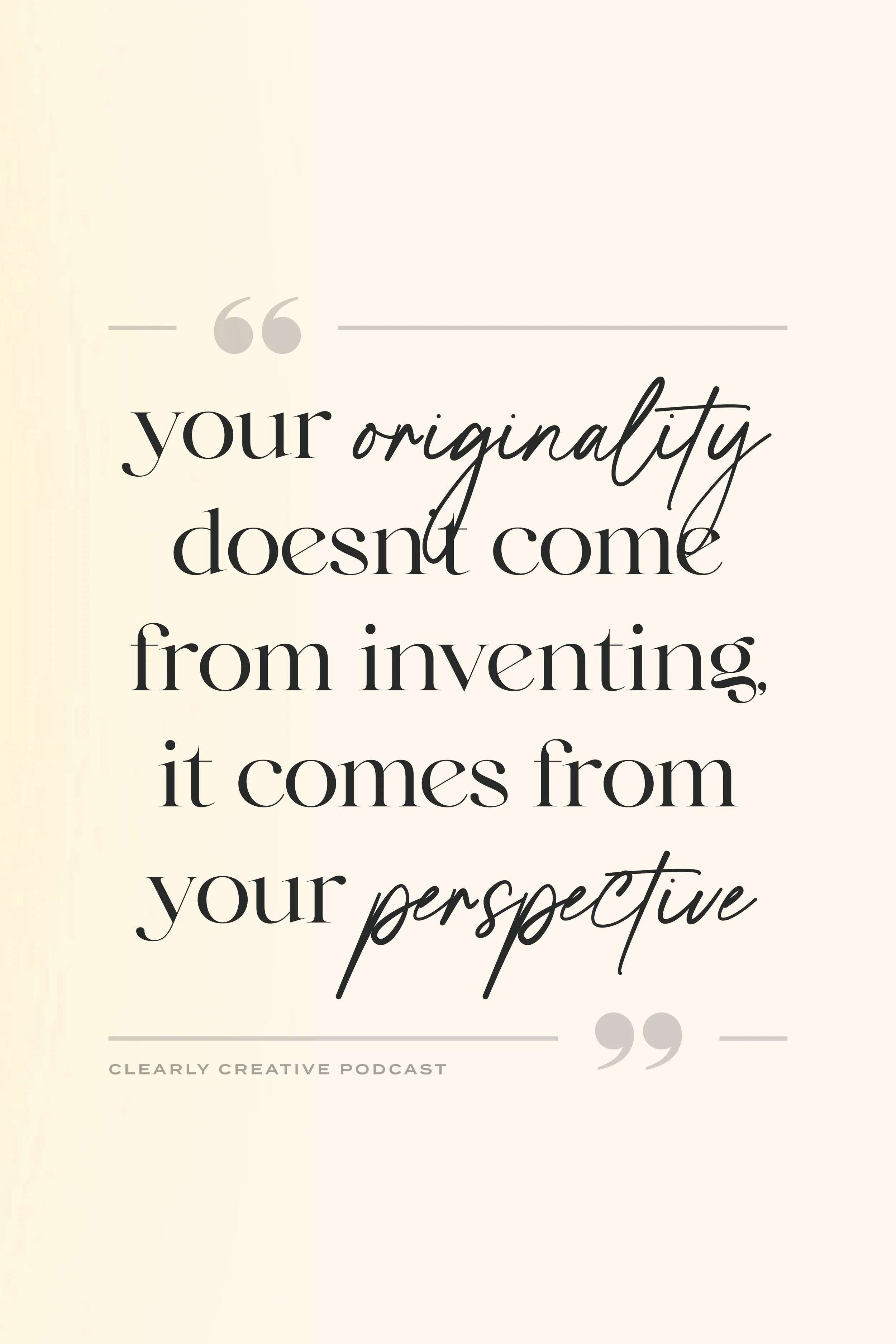Debunking the Myth of Originality: Why True Creativity Isn't About Being the First
You’ve heard the advice all your life: Think outside the box. Be original. Create something no one’s ever seen before.Originality has been held up as the ultimate goal for creatives. We idolize stories of “genius” innovators who seemingly pulled groundbreaking ideas out of thin air.
But here’s the question—what if originality, as we’ve been taught to see it, doesn’t actually exist?
I know, it sounds like a creative buzzkill. But stay with me. Letting go of the pressure to be the first might actually be the key to unlocking a deeper, freer kind of creativity.
The Remix of Creativity: Building on What Came Before
In his book Steal Like an Artist, Austin Kleon says it plainly: nothing is original. Creativity is more like an endless remix, where every idea builds on what came before. You can see this concept everywhere—across art, music, design, and storytelling.
Chris Do, founder of The Futur, often talks about how originality isn’t about isolation; it’s about connection. The same goes for graphic design legends like Paul Rand and Saul Bass, who drew from modernist art, architecture, and culture. They weren’t afraid of influence—they embraced it, using it as fuel for innovation.
And that’s the key shift: influence vs. imitation. Influence happens when you absorb ideas, let them blend with your perspective, and transform them into something new. It’s like Picasso said: “Good artists copy, great artists steal.” He didn’t mean plagiarism. He meant taking inspiration so deeply into your creative core that it becomes uniquely yours.
Creativity Across Mediums: The Endless Cycle of Influence
Think about fashion. Lately, 90s and Y2K trends have made a major comeback. But it’s not just about nostalgia. Designers remix those old styles with fresh materials and modern silhouettes. Marc Jacobs described fashion as the art of making things “new again.” The same concept applies to all creative fields.
In music, producers sample sounds from existing tracks to create something original. Mark Ronson demonstrated this in a TED Talk by remixing the TED intro theme into a completely new beat. This idea—taking what exists and reshaping it—drives creativity forward.
Even William Shakespeare wasn’t inventing stories from scratch. His plays reworked historical events and older tales, but his storytelling mastery made those influences feel timeless. In The War of Art, Steven Pressfield explains that inspiration doesn’t happen in isolation. It comes when we immerse ourselves in work and ideas that feed our creativity.
The Science Behind Creative Breakthroughs
Research backs this up. Studies on combinatorial creativity show that innovation often arises from blending concepts across different fields. According to a study in the Journal of Creative Behavior, cross-disciplinary influences lead to the most groundbreaking ideas.
You can see this in storytelling too. Joseph Campbell’s hero’s journey structure has inspired countless films—Star Wars, Harry Potter, The Lion King. Each story follows a similar pattern, but they feel unique because of the characters, themes, and perspectives each creator brings.
Visual art offers another example. The fundamentals—like the color wheel—haven’t changed for centuries. But artists innovate by experimenting with how color, light, and texture interact. Think about Monet and Van Gogh. Both revolutionized the use of color, yet their styles are completely distinct.
How to Embrace Your Creative Voice
If you’ve ever felt stuck because “everything’s already been done,” here’s some good news: Your originality doesn’t come from inventing something entirely new. It comes from your perspective—shaped by your life experiences, joys, struggles, and worldview.
Instead of chasing the impossible idea of being 100% original, focus on what excites you. Be a sponge. Absorb inspiration from art, music, nature, conversations, and trust that your creativity will naturally transform those influences into something fresh.
Creativity is like a giant, ongoing conversation that spans generations. Every artist, writer, and creator who’s come before you has added their voice to this dialogue. Now it’s your turn.
Join the Creative Journey
If you’re looking for tools to explore your creative voice, head over to clearlycreativepodcast.com and sign up for the Clearly Creative Club. You’ll gain access to a free workbook filled with prompts, tools, and insights to help you uncover your unique style and shape your influences into something truly yours.
Also, follow us on Instagram @ClearlyCreativePodcast for inspiration, updates, and creative community conversations.
Final Thoughts
Creativity isn’t about being the first. It’s about contributing your voice to the ongoing conversation of art and ideas. Every creative person you admire started by drawing on their influences. So, give yourself permission to be inspired. Take the things you love, let them shape you, and trust that your work will stand out—because you stand out.
Keep creating, keep questioning, and remember: your voice matters.
If this post resonated with you, share your thoughts. I’d love to hear how you remix the world around you—what inspires you, what challenges you. Tag us so we can keep the conversation going. Until next time!
— Phoebe Seward, Host of Clearly Creative






